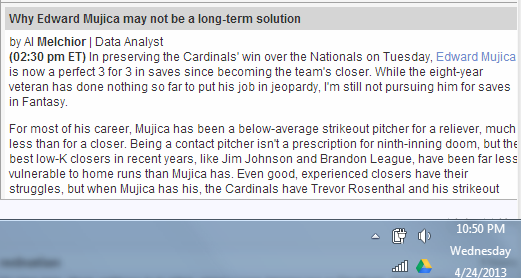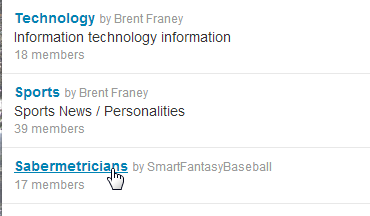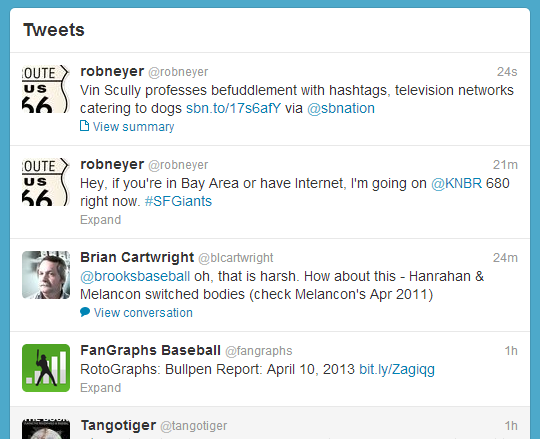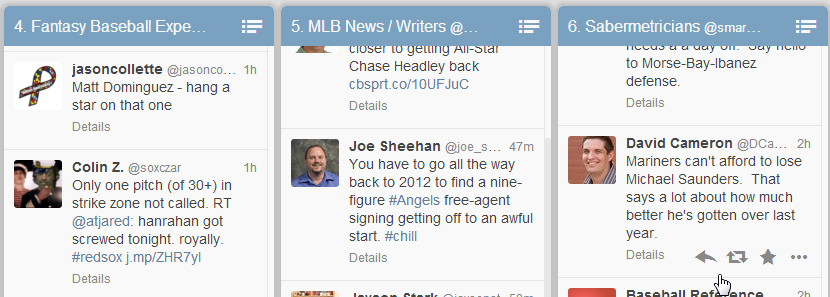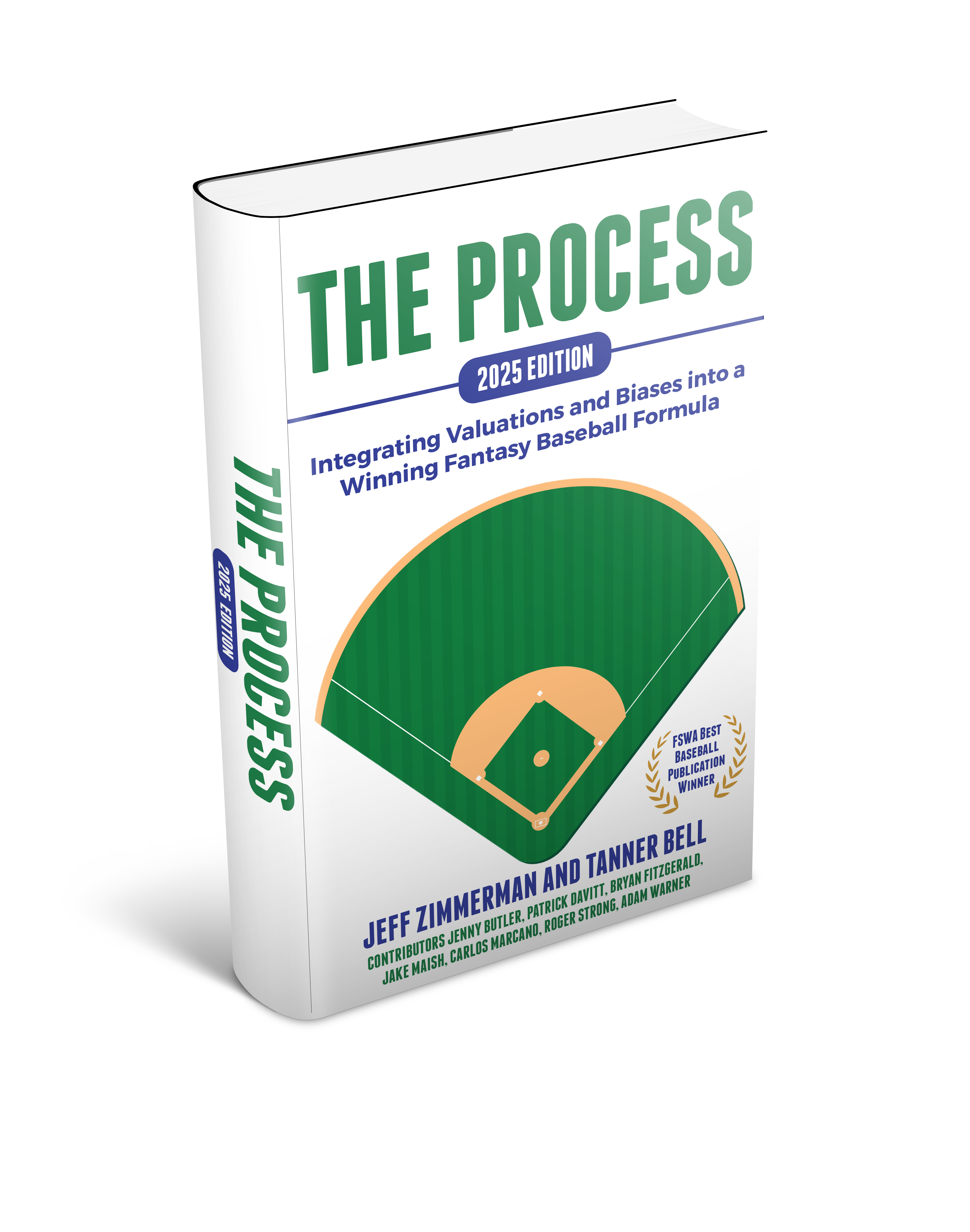Let’s get nerdy and mix economic supply and demand theory with fantasy baseball. While not an economics expert, I think the “supply” part of the fantasy baseball equation can be thought of in two ways:
- An individual player – in which case the supply is fixed, there is just one player
- All of the players in the player pool (where the player pool could be all players, all second basemen, etc.) – in which case the supply can fluctuate as rookies enter into the player pool, players get hurt, players switch from the AL to the NL if you play in AL- or NL-only leagues
Let’s think about things from bullet 1, an individual player perspective, and apply this part of the supply and demand model:
If demand increases, a shortage occurs, leading to a higher equilibrium price. If demand decreases, a shortage occurs, leading to a lower equilibrium price.
The statements above can be modeled with this graph below:
Delving into a brief economics lesson, the price of a product (or player) is set at the point where the demand curve (red downward sloping curve) meets the supply curve (teal upward sloping curve). In the picture above, the D1 demand curve crosses the S supply curve at the price of P1.
An increase in demand is illustrated by the red D1 curve shifting to the right to become the D2 curve. Under this scenario, D2 crosses the S supply curve at the higher price of P2.
I Love the Colored Picture, But What Does This Have To Do With Fantasy Baseball?
I’m surely not considering everything that can affect a player’s demand, but I’ll group demand shifts into two categories:
- Real, factual, supported on-field events
- Artificial, unfounded, unsupported changes in demand
The first category would include events that truly do support a change in the demand of a player. This would be things like a player getting injured (and decreasing demand), a minor league player getting called to the majors (and increasing demand), a player showing improved abilities and hitting/pitching better than expected (and increasing demand), a player performing worse than expected (and decreasing demand), or a player moving to a more favorable environment that should help their production (and increasing demand).
These events are real. They can be measured to some extent. We can see when players improve their skills, get more opportunity to play, or change their surroundings.
Because these are real and measurable, a change in the demand and valuation of a player makes sense.
But Many Changes in Valuation Are Not Founded
A major mistake I see from fantasy baseball players is to make adjustments in demand that are not related to these real measurable events. Some examples:
- Rookies and other young players are perceived as “cool” or “sexy”, and there is an artificial shift in their demand curves to the right because of this.
- Older and aging players are perceived as the opposite, and there is an artificial shift in their demand curves to the left because of this.
- A player gets pegged as a “sleeper” by the fantasy community, this takes on a life of its own, and causes a shift in the player’s demand curve to the right.
How To Take Advantage of These Situations
This definitely occurs. There’s not a doubt in my mind. It’s up to you to recognize when this is happening and sell or avoid players that are overvalued because of artificial shifts in demand, and when to buy or seek out players that are undervalued.
Current Examples Leading to mis-Valued Players
- Mike Trout – He certainly had a magical season last year. But do you know that he played two and half seasons in the minors and didn’t hit 30 home runs COMBINED in those three years? He did hit 30 in his first major league season, but it seems like a bad idea to expect that again.
- Mike Zunino – He’s being talked about like he’s the next great offensive catcher. Who is the last young catcher to come into the major leagues and succeed? I can’t name one.
- Paul Konerko – He’s the poster boy of the old, unsexy, but still very productive player. Nobody wants Paul Konerko on their team. BORING! Well, do me a favor and go look at his career stat page. He’s a machine. And he was only the 18th ranked first basemen heading into the season.
You get the idea. There are many more examples out there. And the line between supported and unfounded changes in demand is gray and blurry.
The hot new trend in fantasy baseball analysis is to quote a pitcher’s velocity as if it is the determining factor in their success. A few weeks into the season news has surfaced that C.C. Sabathia, Justin Verlander, and David Price are suffering from lost velocity.
On the surface, this sounds terrible. And while the decrease in velocity is a measurable fact, it doesn’t necessarily indicate a loss in effectiveness. After C.C. Sabathia’s first start, it was widely quoted that his fastball was several MPH slower than it was in 2012. His career was over. He was old. He would never be the same. In his next two starts he went out and threw 15 IP, allowed only one earned run, and struck out 13.
More pitchers facing lost velocity in early-2013: Matt Moore (29 strikeouts in 26 IP), Lance Lynn (34 strikeouts in 29 IP), and Max Scherzer (36 strikeouts in 24 IP).
Conclusion
Recognize when and why a change in demand has occurred. You hear a lot of “buzz” about a player. A player is being talked about on Sportscenter. You hear someone say a “player’s career is over”. Do the opposite of what the crowd is doing and you’ll come out ahead in the long run.
Thanks. Stay smart.



